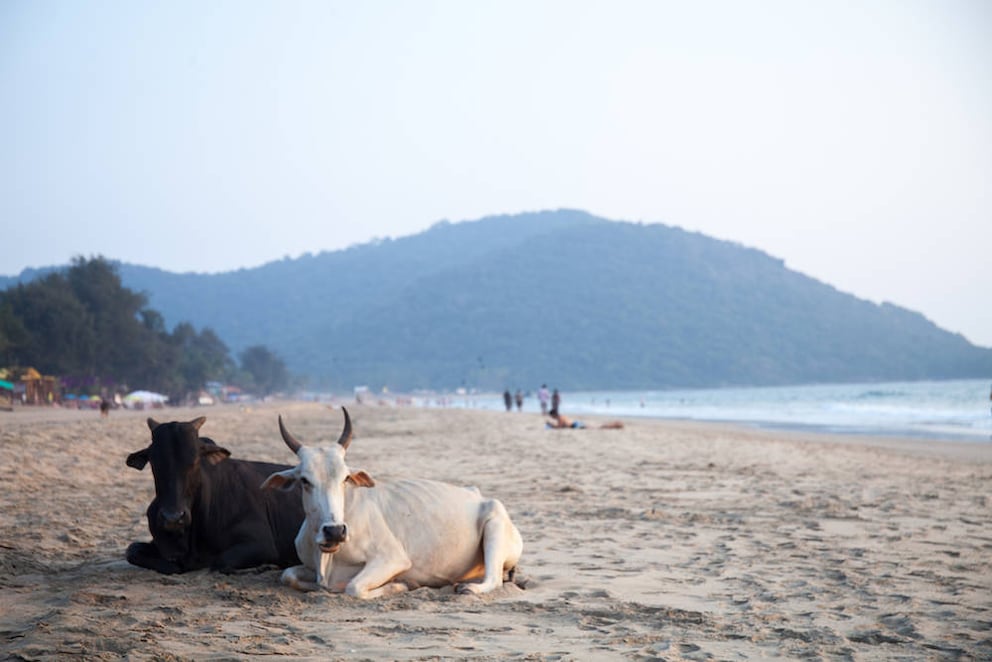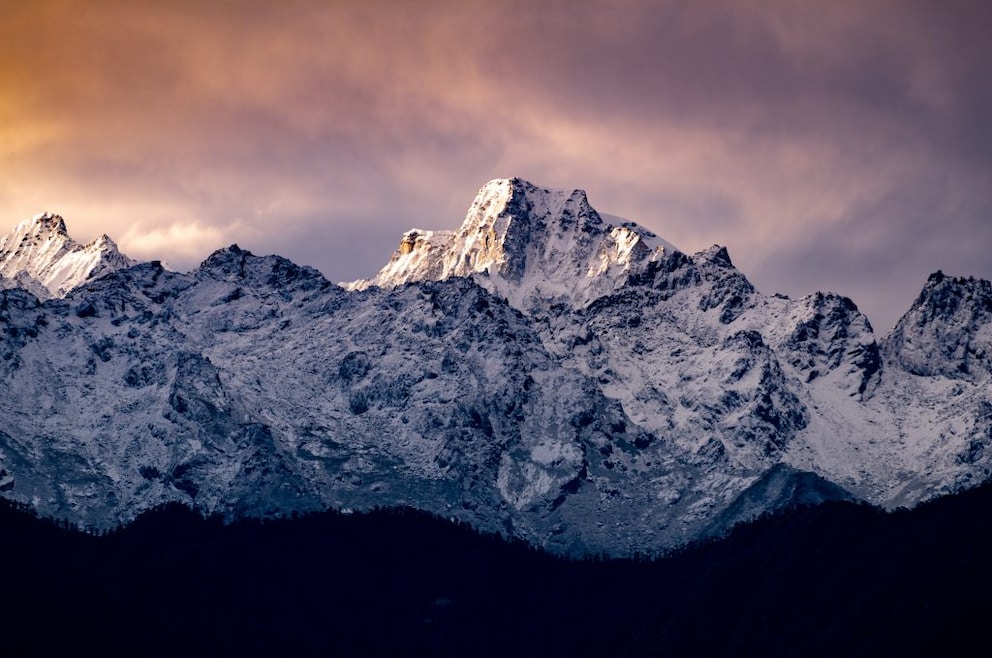January 6, 2025, 7:30 am | Read time: 6 minutes
TRAVELBOOK author Anna Wengel (Chiodo) spent almost three months in India. Here she explains why Goa is a good starting point for travelers to India, but not enough to get an impression of the country.
A man lies on the side of the road. He is not bothered by the honking of the rickshaws, the rapid overtaking maneuvers of the buses, or the hungry bites of the street dogs. The man is dead. Lying there, just part of it. Just like the orange-clad sadhus with their white, red, and yellow painted faces and the cows that every road user somehow maneuvers around. They are all part of the street scene in the South Indian city of Tiruvannamalai. It shocked me. That someone can just die there, and no one seems to care. To this day, I still wonder whether someone cleared away the body at some point or whether it really was just eaten up piece by piece.
Images like these are not burned into my brain from my time in Goa. Goa is India light. It’s reminiscent of the original, but it’s just a slimmed-down version. That’s why Goa is the perfect place to start your first trip to India. It doesn’t scare Western tourists; the cultures don’t clash so blatantly here. You can get a taste of India first.
TRAVELBOOK author Anna Wengel (Chiodo) gives more tips and inspiration about Goa in the following podcast episode of “In 5 Minuten um die Welt”:
In Goa, There Are More Tourists Than Locals
In Goa, tourists don’t need their hands and feet to talk. Everyone speaks English. Holidaymakers are overrepresented. Accordingly, the locals, who feel outnumbered, have adapted to the masses of tourists who visit Goa every year. Where, for example, good coffee is in short supply for spoiled Europeans in India, in Goa they suddenly find a selection of stores with strong coffee in all kinds of variations. The same applies to food. If the squeamish stomach couldn’t or didn’t want to get used to the spicy national dishes, here it gets many non-spicy choices of hipster food trends in addition to rice and chapati.
Tourists don’t need to adapt when it comes to clothing, either. While beach holidaymakers in Mamallapuram in south-east India only jump into the sea fully clothed, in Goa people show their skin. And lots of it. White bodies in bikinis and board shorts not only try to transform their inside skin color into a summer complexion on the beach, but also in the narrow streets of the fishing villages of Agonda and Arambol, beer bellies are allowed to hang over pants and bottoms out of shorts. Nobody seems to mind.

Also interesting: Arambol in Goa is India’s answer to the Ballermann
Changing Morals and the Himalayas
In the same way, no one seems to mind when women and men live together in constellations that scream immorality to traditional believers. When we explain to our landlady in Goa that eight of us want to live in her two-bedroom apartment, she just shrugs her shoulders and asks for more money. On the other hand, when I want to move into a hotel room in Puducherry together with two male travel friends, I can literally see the excited hotelier branding the word “whore” on my forehead. He calms down, however, when we give him a story that fits in with his pigeonholes, thanks to which I am suddenly richer by a husband and a brother.
Goa is closer to the western standard; there are fewer culturally conditioned things that you should be considerate of than elsewhere. The locals in the tourist center are too used to visitors misbehaving. It is too normal for people to drink in the street, make out, and walk around in inappropriate clothing. Of course, it’s easier, the culture shock is less. But you don’t get to know India by just hanging out in Goa and celebrating the usual. There is so much about India that you can’t experience in Goa. Apart from human encounters, there are truly breathtaking landscapes. The Himalayas, for example. Just up north, I was able to marvel at a huge blue moon standing over the snow-capped peaks of the mountain giants, giving real competition to the human-sized giant monkey sitting on a tree nearby.

Yoga Vibes
Or spirituality. My main reason for traveling to India was yoga. And I’m not alone in this. Since yoga has reached mass appeal in the West, wannabe yogis have been making pilgrimages to India in droves. Nevertheless, there are still places where you can still feel the atmosphere that many of us came for. Ballermann Goa is not one of them, despite the various yoga, meditation, and other offers. But the place with the dead man on the street is—Tiruvannamalai. The temple-mountain town in the state of Tamil Nadu in the south is one of the most popular Hindu pilgrimage sites. The god Shiva is said to have once appeared here on Mount Arunachala. The Shiva attribute Trishula, the trident, now stands in a prominent position at the top of the mountain and watches over the city. And with it the huge Arunachaleswara temple, to which Indian pilgrims in particular come all year round, giving the city that enraptured, somehow unreal atmosphere. But you can’t really see the temple from the mountain. Smog.

Arambol in Goa Is India’s Answer to the Ballermann

Why Nepal is Both, a Nightmare and a Dream

11 Tropical Destinations Where Vacations are still Relatively Cheap
Smog Is a Big Problem
This is another thing that sets Goa apart from many other parts of India: Smog is not a big problem right by the sea, but it is almost everywhere else.
Even high up in the mountains, smog is an issue. Early in the morning, you can still look down from the village of Bhagsu to McLeod Ganj and almost see the Indian home of the Dalai Lama. Shortly after sunrise, Dharamsala’s suburb disappears under a thick cloud of haze. In contrast, India’s other yogi pilgrimage center is not quite as hazy: Rishikesh in the northern Indian state of Uttarakhand. Although it feels like there are almost as many tourists here as in Goa, the Beatles pilgrimage site has somehow managed to retain its spiritual atmosphere. The reason for this is the holy river Ganges that flows through and next to the town. A place of purification, disposal of corpses, and water sports.
All of this is part of everyday life in India. An everyday life that takes some getting used to for many Western visitors and is sometimes absolutely nerve-wracking, but which cannot be experienced in Goa.

